When the gates closed on the Royal Naval Dockyard at Chatham on 31 March 1984, it marked the end of 400 years of shipbuilding on the banks of the Medway in Kent. But the end of one era marked the start of a new one and today The Historic Dockyard Chatham covers 80 acres and numbers more than 100 buildings and structures, most of them built between 1704 and 1855.
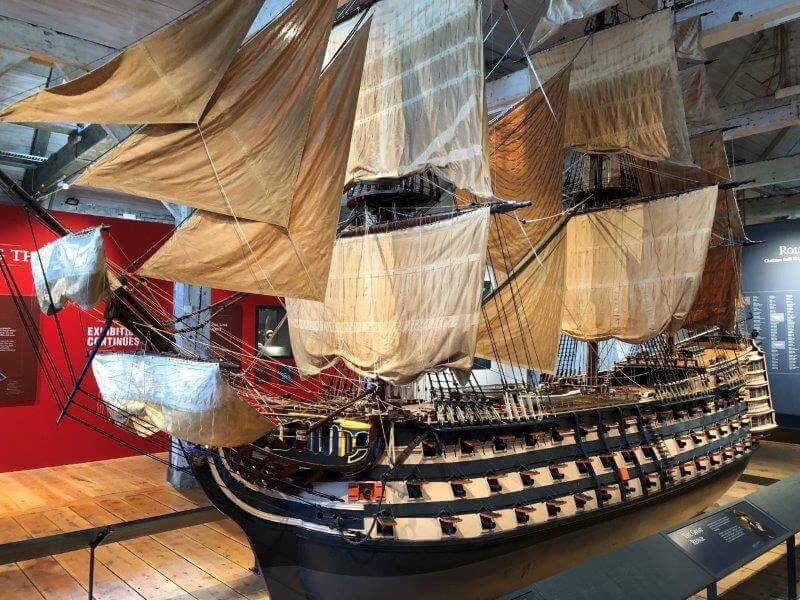 The first warship built at Chatham was the Merlin, launched in 1579, and nine years later, the shipwrights of Chatham prepared the Queen’s ships to face the Spanish Armada. In 1618, the Dockyard moved to its present site, where Nelson’s flagship, HMS Victory would be built in 1759. The Industrial Revolution brought steam ship technology and in 1908, the first of six submarines was launched from Chatham’s No 7 Slip, but after a vital role in two World Wars, the need for Chatham’s facilities and expertise diminished as the Royal Navy gradually downsized.
The first warship built at Chatham was the Merlin, launched in 1579, and nine years later, the shipwrights of Chatham prepared the Queen’s ships to face the Spanish Armada. In 1618, the Dockyard moved to its present site, where Nelson’s flagship, HMS Victory would be built in 1759. The Industrial Revolution brought steam ship technology and in 1908, the first of six submarines was launched from Chatham’s No 7 Slip, but after a vital role in two World Wars, the need for Chatham’s facilities and expertise diminished as the Royal Navy gradually downsized.
But the glory days of Chatham Dockyard will never be lost, thanks to the Chatham Historic Dockyard Trust which now runs this unique site. Naval history not your thing? You don’t need any particular knowledge or interest in ships or shipbuilding to enjoy an absorbing day out here as I found out on a recent visit. Fan of Call the Midwife perhaps? The ‘washing line street’ scenes were filmed here, along with other television and cinema productions including Les Misérables and Mr Selfridge. There’s social history to intrigue all ages and the chance to see how ropes are still made commercially in a building nearly ¼ mile long.
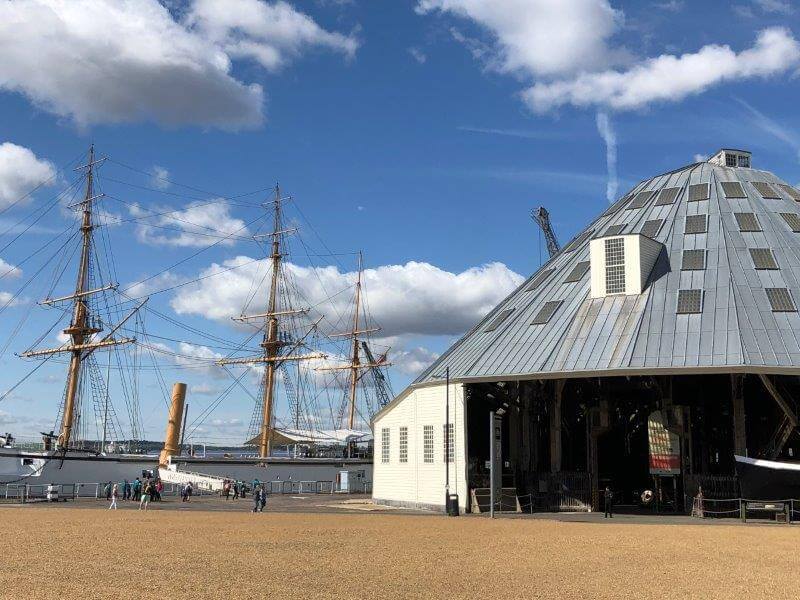 We visited midweek in early September beneath blue skies, but there is plenty to see and do under cover for less clement weather. Just wear warm clothing and a waterproof for the walk between attractions. Apart from a few obvious exclusions like the submarine and battleship visits, the site is widely accessible – download the comprehensive access guide as a PDF here.
We visited midweek in early September beneath blue skies, but there is plenty to see and do under cover for less clement weather. Just wear warm clothing and a waterproof for the walk between attractions. Apart from a few obvious exclusions like the submarine and battleship visits, the site is widely accessible – download the comprehensive access guide as a PDF here.
Arrive by car and you park under the vast canopy of one of the construction bays, then follow a path marked with a timeline of the Dockyard’s famous ships, to the entrance, shop and cafe area. Adult entry is £22 (£19.50 for over-60s and serving of former members of HM Forces) and tickets allow unlimited entry for 12 months.
 Visitors explore at their own pace and in any order they like, but you’ll need a timed ticket for HM Submarine Ocelot and the guided tour of the Victorian Ropery – just go to the Command of the Oceans area to book your free place.
Visitors explore at their own pace and in any order they like, but you’ll need a timed ticket for HM Submarine Ocelot and the guided tour of the Victorian Ropery – just go to the Command of the Oceans area to book your free place.
This is the best place to start your visit anyway and we were instantly swept up by Hearts of Oak, a 35-minute multimedia walk through the glory days of wooden warships. Follow retired Master Shipwright John North, Carpenter on the Valiant, as he guides his grandson through the processes of traditional shipbuilding, hoping to dissuade him from following his hero Nelson into the Navy and taking up shipbuilding instead. Does he succeed? I won’t spoil the story …
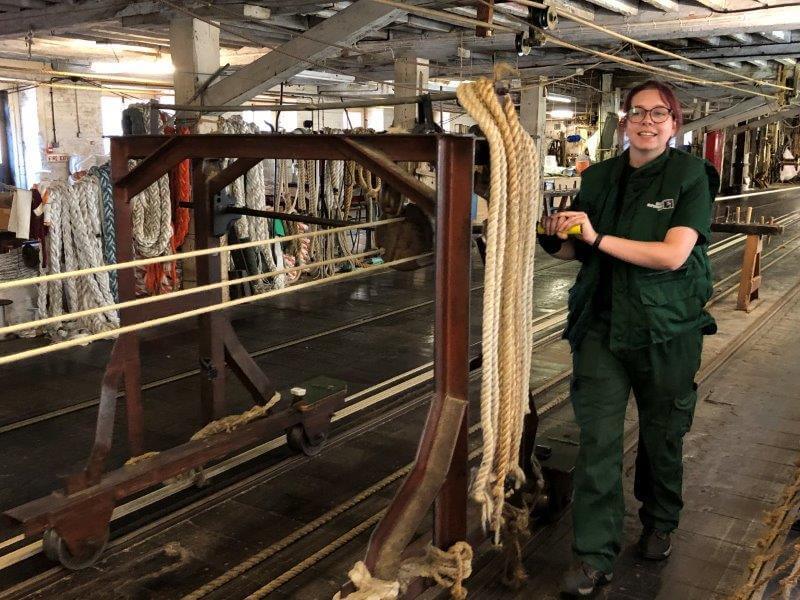 Then emerge into the Victory Gallery and discover the battle for supremacy of the seas through both artefacts and two short films fronted by Fiona Bruce, with the addition of a sign language transcription in the corner of the screen.
Then emerge into the Victory Gallery and discover the battle for supremacy of the seas through both artefacts and two short films fronted by Fiona Bruce, with the addition of a sign language transcription in the corner of the screen.
Outside, go on board Chatham’s three historic warships for a real flavour of life at sea through the ages. HMS Gannet, a Victorian sloop built at Sheerness in 1878; HMS Cavalier, built in 1944 and serving till 1972; and HM Submarine Ocelot, launched in 1962 and the last Royal Navy warship built at Chatham.
Beyond the historic ships, the Victorian Ropery is the only one of the original four Royal Navy Ropeyards still in operation. Here you are in the heart of the Dockyard’s atmospheric manufacturing buildings from the 18th century. Visit the Steam, Steel and Submarines gallery next door for the story of the Dockyard through the industrial revolution and two World Wars. You’ll find lots of enthusiastic volunteers here, eager to point out gems you might not have noticed. My attention was drawn to a fascinating handwritten account of an accident that led to the death of a dockyard worker hit on the head by a plank!
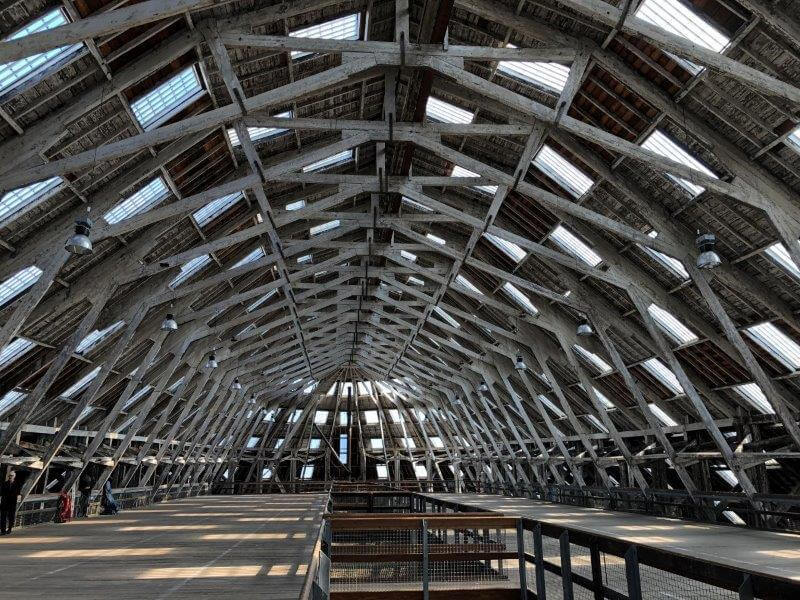 Our last stop was No 3 Slip, which isn’t known as The Big Space for nothing. Built in 1838, this immense covered slip was the largest wide span timber structure in Europe. Nearly two centuries later, it still packs a pretty powerful punch. The ground floor is home to all manner of small ships and heavy equipment, as well as the evocative collection of historic vessels commissioned by the Royal National Lifeboat Institution. But don’t forget to take the stairs or lift to emerge above the mezzanine floor beneath that extraordinary wooden roof, shaped like an upturned boat with more than 400 windows. No nautical knowledge necessary to appreciate its symmetrical beauty and craftsmanship.
Our last stop was No 3 Slip, which isn’t known as The Big Space for nothing. Built in 1838, this immense covered slip was the largest wide span timber structure in Europe. Nearly two centuries later, it still packs a pretty powerful punch. The ground floor is home to all manner of small ships and heavy equipment, as well as the evocative collection of historic vessels commissioned by the Royal National Lifeboat Institution. But don’t forget to take the stairs or lift to emerge above the mezzanine floor beneath that extraordinary wooden roof, shaped like an upturned boat with more than 400 windows. No nautical knowledge necessary to appreciate its symmetrical beauty and craftsmanship.
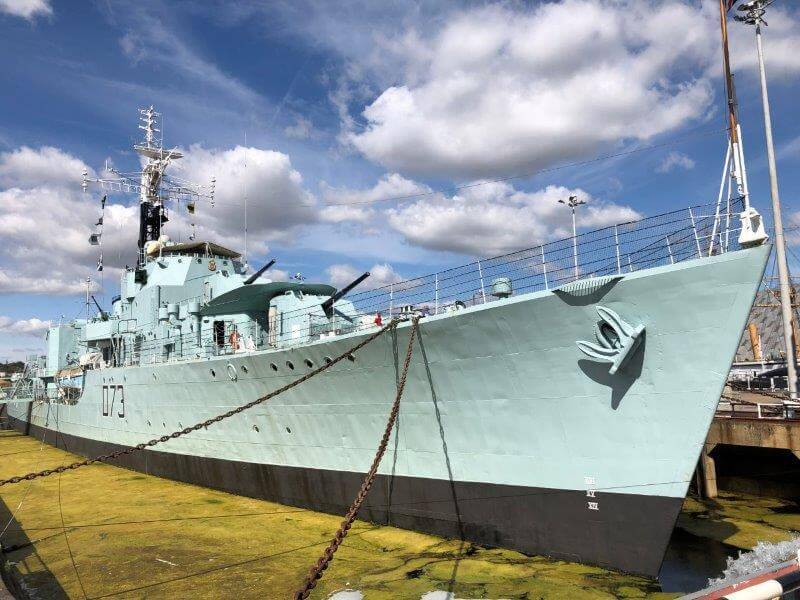 Allowing for a short lunch stop in the Mess Deck beside the shop and main entrance, we spent a very relaxed four hours touring all the main attractions. Real enthusiasts could easily spend longer if they wanted to study all the information panels. If you’re wondering about a three-generational visit, you’ll find lots to intrigue younger visitors, including interactive displays, outdoor play areas and an indoor soft play zone. And at the end of the day, I defy any visitor, of any age, not to come away feeling entertained, informed and downright overawed!
Allowing for a short lunch stop in the Mess Deck beside the shop and main entrance, we spent a very relaxed four hours touring all the main attractions. Real enthusiasts could easily spend longer if they wanted to study all the information panels. If you’re wondering about a three-generational visit, you’ll find lots to intrigue younger visitors, including interactive displays, outdoor play areas and an indoor soft play zone. And at the end of the day, I defy any visitor, of any age, not to come away feeling entertained, informed and downright overawed!
For more information visit thedockyard.co.uk.











